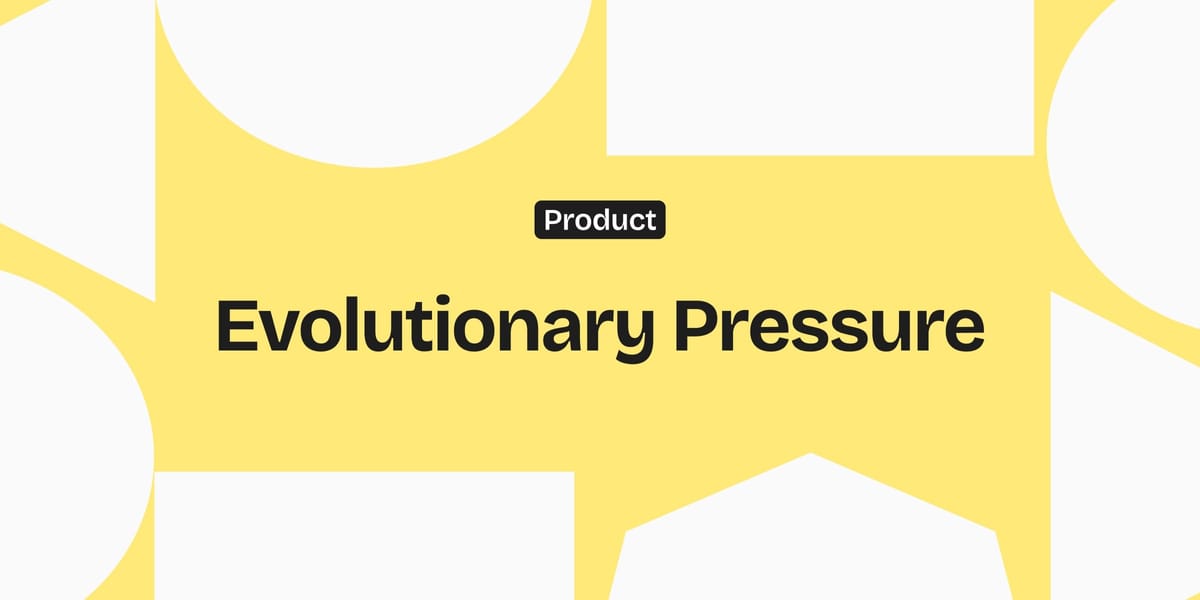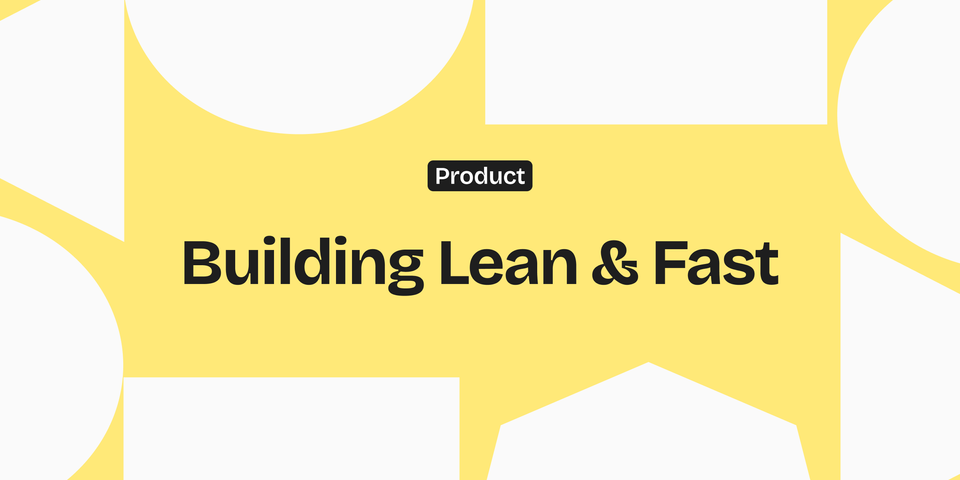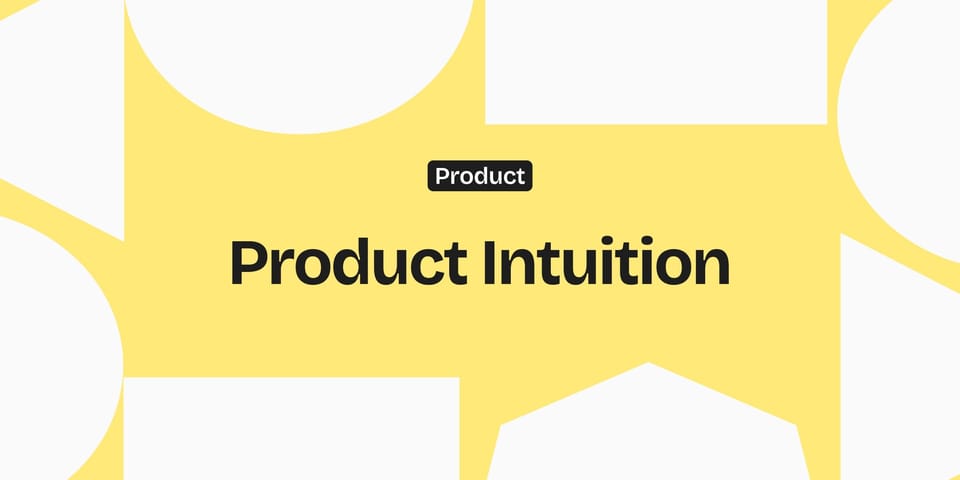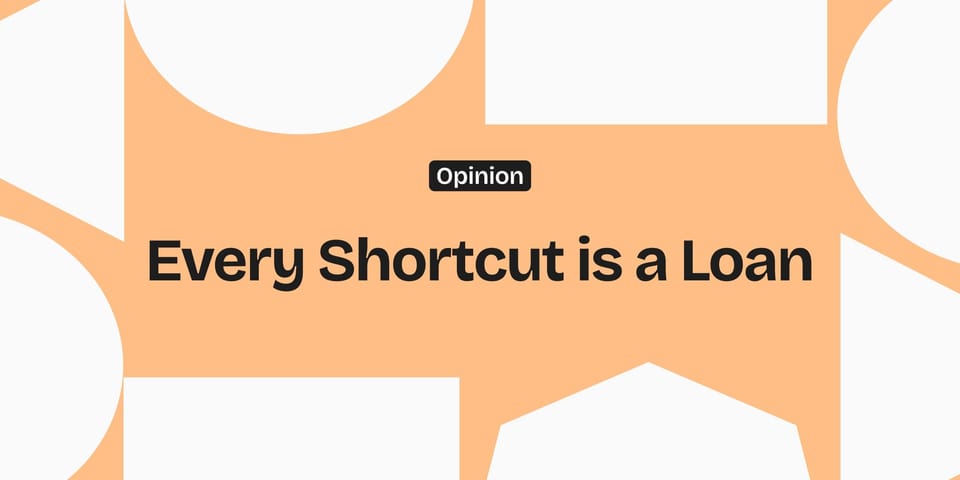Adapt or Vanish
Every product operates under pressure from competitors, platforms, users, or internal growth targets. What survives isn’t always the best. It’s what adapts the fastest.

Not every product fails because it was bad. And not every winner starts as the best. What separates them is adaptability.
That's not just a nice idea. It's how product ecosystems work.
Every product exists in an ecosystem. App stores change policies. Competitors ship faster. Users move on. Teams reorganize. What feels stable today can become irrelevant tomorrow, not because it broke, but because the environment changed.
This what biologists call evolutionary pressure. And it's always on.
Some pressure comes from the outside:
- Instagram launches a new format and suddenly your engagement drops.
- Apple tweaks privacy policies and your attribution model stops working.
- A viral competitor redefines what "fast" feels like, and your product starts to feel slow by default.
Some pressure is internal:
- Your user base shifts from early adopters to mainstream.
- Growth targets go up but headcount stays flat.
- A new team leader wants to rewrite how success is measured.
None of these events are inherently bad. But they force mutation.
And if you don't evolve deliberately, you mutate chaotically.
Real-World Ripples
Meta's Strategic Copy of Snapchat
When Snapchat launched Stories, it created a new format: casual, ephemeral content that didn't need to be perfect and encouraged daily use. Meta watched, waited, then copied-rolling out Stories across Instagram, WhatsApp, Facebook, and Messenger. The pressure wasn't internal. It was existential. Stories were stealing time, and Meta responded not with innovation, but replication at scale.
In 2013, Zuckerberg offered to buy Snapchat for up to $3 billion. Spiegel said no. What followed was a strategic shift. In a 2016 all-hands meeting, Zuckerberg told employees: "Don't be too proud to copy."
Internally, Snapchat was now seen as a "meaningful competitor" and a threat to Meta's dominance. Zuckerberg personally pushed Instagram's team to build their own version of Stories-even when the founders resisted.
The move was blunt. But it worked. Stories became the dominant format across Meta's ecosystem. What began as imitation turned into adaptation-and ultimately, the default UX pattern for social sharing around the world.
Twitter's Rapid Mutation
Once a reverse-chron feed that thrived on immediacy, Twitter tried to shift into a TikTok-style algorithmic push model. But the shift wasn't gradual. It felt sudden and untested. Users woke up to a feed that no longer reflected their interests. While the intention may have been defensible, the execution broke the product's rhythm. The pressure came from competition - but the response felt like panic, not adaptation. Twitter didn't evolve. It lurched.
Gojek in Indonesia vs Thailand
When we launched in Indonesia, we had years of cultural context. The product was shaped around local behavior - from how people ordered food to how they dealt with drivers. But when we expanded to Thailand, we realized how little of that actually transferred.
For example, in Indonesia, riders were used to seeing upfront prices and estimated delivery times. It created trust early. But in Thailand, users expected more visual confirmation - graphics showing where their order was, how many steps remained, and more control in modifying orders.
Even the tone of our copy had to shift. What sounded friendly in Indonesian came across as casual or confusing in Thai. Push notifications that worked in Jakarta fell flat in Bangkok. Promos weren't converting. It wasn't just language - it was cultural rhythm.
We weren't just scaling horizontally. We were adapting vertically into a completely different behavioral stack. What worked in Jakarta didn't work in Bangkok. Evolution wasn't optional. It was the only way to stay relevant.
Not all evolution is visible.
Sometimes it's a subtle UI tweak.
Sometimes it's a team realignment.
Sometimes it's the moment you admit something isn't working anymore.
The question isn't whether you'll face pressure. You will. Products that survive long enough always do.
But when it happens, you can either brace and hope - or evolve with intent.
It's whether your product will adapt on purpose - or by accident.
That's evolutionary pressure. You don't always have to invent. You just have to adapt and keep adapting.
I've come to believe that copying is not just fine, it's often how evolution begins. You copy something that works, then shape it to fit your ecosystem. That's not theft. That's survival.
"Good artists copy. Great artists steal."
- Pablo Picasso
Everyone starts with imitation. But the great ones don't stay there. They mutate, adjust, reshape; until the copied thing becomes uniquely theirs.




